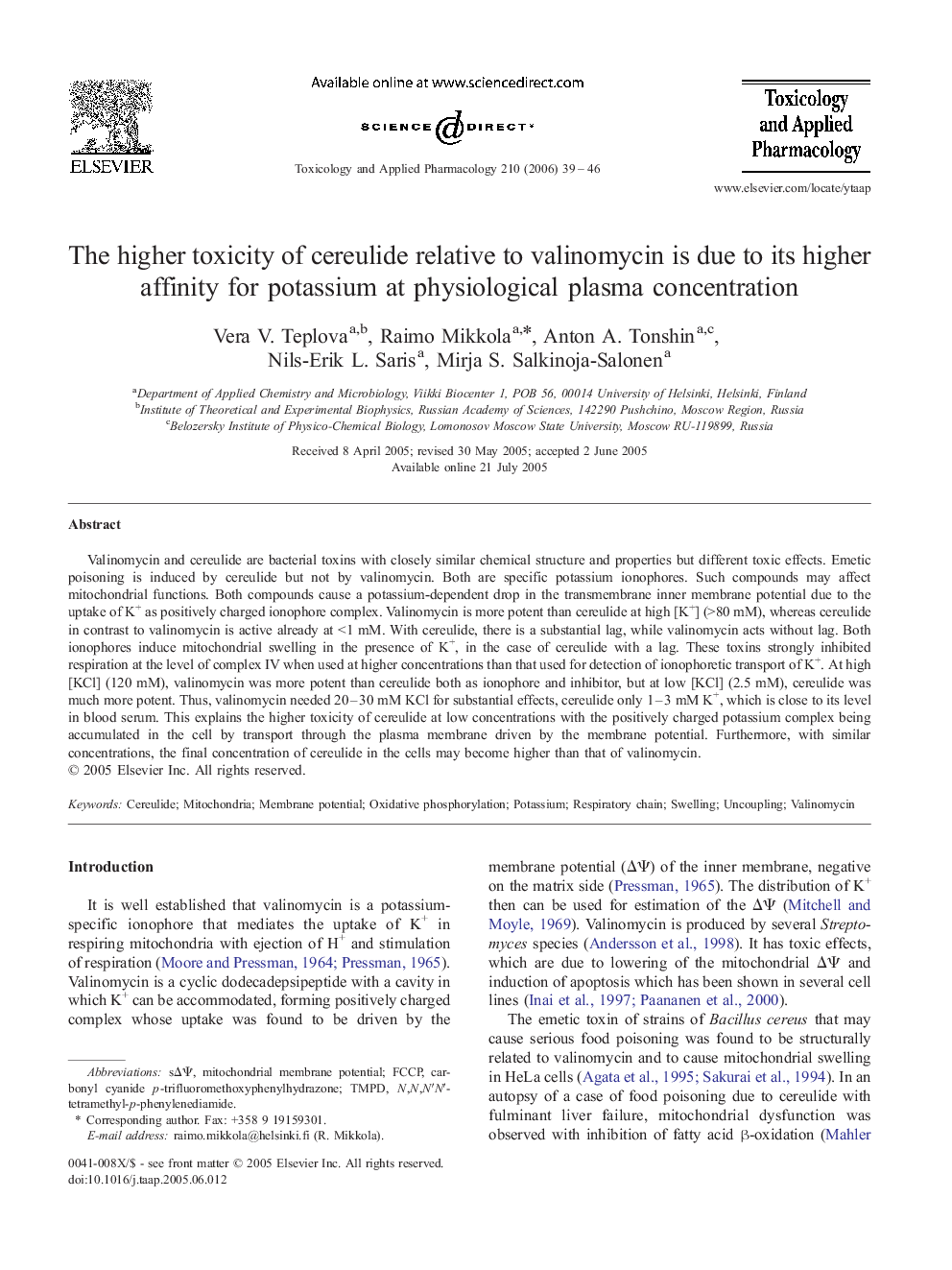| کد مقاله | کد نشریه | سال انتشار | مقاله انگلیسی | نسخه تمام متن |
|---|---|---|---|---|
| 2571898 | 1561183 | 2006 | 8 صفحه PDF | دانلود رایگان |

Valinomycin and cereulide are bacterial toxins with closely similar chemical structure and properties but different toxic effects. Emetic poisoning is induced by cereulide but not by valinomycin. Both are specific potassium ionophores. Such compounds may affect mitochondrial functions. Both compounds cause a potassium-dependent drop in the transmembrane inner membrane potential due to the uptake of K+ as positively charged ionophore complex. Valinomycin is more potent than cereulide at high [K+] (>80 mM), whereas cereulide in contrast to valinomycin is active already at <1 mM. With cereulide, there is a substantial lag, while valinomycin acts without lag. Both ionophores induce mitochondrial swelling in the presence of K+, in the case of cereulide with a lag. These toxins strongly inhibited respiration at the level of complex IV when used at higher concentrations than that used for detection of ionophoretic transport of K+. At high [KCl] (120 mM), valinomycin was more potent than cereulide both as ionophore and inhibitor, but at low [KCl] (2.5 mM), cereulide was much more potent. Thus, valinomycin needed 20–30 mM KCl for substantial effects, cereulide only 1–3 mM K+, which is close to its level in blood serum. This explains the higher toxicity of cereulide at low concentrations with the positively charged potassium complex being accumulated in the cell by transport through the plasma membrane driven by the membrane potential. Furthermore, with similar concentrations, the final concentration of cereulide in the cells may become higher than that of valinomycin.
Journal: Toxicology and Applied Pharmacology - Volume 210, Issues 1–2, January 2006, Pages 39–46